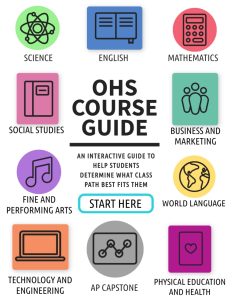Eat a Mango, Don’t Vape One
Vaping illustration by junior Hannah Johnson, demonstrating a student vaping the the restroom; oblivious to the sign that reads “Health concerns linked to vaping”.
November 3, 2019
Kenzie Taylor
Editor in Chief
Vaping is the use of electronic cigarettes; an array of hand-held devices that simulate smoking tobacco. It’s caused a rapidly growing epidemic throughout high schools nationwide, as more and more students find it to be a popular alternative to smoking cigarettes. Orono High School is no exception.
Since ‘vapes’ don’t contain tobacco, students mistakenly assume that they aren’t harmful. However, Johns Hopkins Medicine alerts the potential effects of engaging with e-cigarettes, stating that nicotine is still present and can lead to withdrawal symptoms, in addition to raising blood pressure; the byproduct of which can be spiked heart rates, and an increased chance of having a heart attack.
Michael Blaha, the Director of Clinical Research at the Ciccarone Center for the Prevention of Cardiovascular Disease, warns that vaping can allow a user to consume more nicotine than a traditional tobacco product could offer, due to the ability to purchase extra-strength cartridges and even increasing the vape’s voltage.
Juul is a company that sells vapes, and is a well-known product amongst teenagers. Be that as it may, Juul’s original intent is clearly stated on their website.
“JUUL Labs’ mission is to eliminate cigarettes. JUUL products are intended for adult smokers who want to switch from combustible cigarettes.”
This message is on an inescapable pop-up screen when a user attempts to open Juul’s website. It is designed so that buyers must confirm they are at least 21 years old before proceeding to the site.
However, it is important to note that vaping is not the only nor is it the best alternative to smoking. E-cigarettes have not yet been approved by the Food and Drug Administration (FDA).
According to the American Heart Association, “e-cigarette vapor includes potentially harmful substances such as diacetyl (a chemical linked to a serious lung disease), cancer-causing chemicals, volatile organic compounds (VOCs), and heavy metals such as nickel, tin, and lead. Users breathe in these toxic contaminants, and non-users nearby risk secondhand exposure.”
Not only are there under-researched chemicals in vapes, the AHA proposes that the long term threat of vaping is the normalization; noting that the popular trend “may re-normalize smoking, which has declined for years”.
A major appeal of vaping to teens is the added flavors, referred to as ‘E-juice’. They are cartridges of flavor that users can insert into their device in order to flavor them.
The AHA says that “Many young people say they’ve tried e-cigarettes in part because of the appealing flavors. More than 80% of teen users say their first e-cigarette product was flavored.”
The Spartan Speaks staff would like to strongly advise students to retire their vapes, because of the undeniable health threats, their addictive nature, and uncertain risks. So, please: the next time you consider picking up a e-cig, eat a mango. Don’t vape one.





























































Dee Taylor • Nov 29, 2019 at 7:39 pm
Great article on a topic that is causing great harm and death to our youth. Thank you for your reporting.